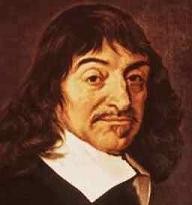Or— Childhood's Rear End
This post was suggested by…
- Today's New York Times—
"For many artists Electric Lady has become a home away from home…. For Jimmy Page the personal imprimaturs of Hendrix and Mr. Kramer made all the difference when Led Zeppelin mixed parts of 'Houses of the Holy' there in 1972."
- The album cover pictures for "Houses of the Holy"
- Boleskine House, home to Aleister Crowley and (occasionally) to Jimmy Page.
Related material:
The Zeppelin album cover, featuring rear views of nude children, was shot at the Giant's Causeway.
From a page at led-zeppelin.org—

See also Richard Rorty on Heidegger—
Safranski, the author of ''Schopenhauer and the Wild Years of Philosophy,'' never steps back and pronounces judgment on Heidegger, but something can be inferred from the German title of his book: ''Ein Meister aus Deutschland'' (''A Master From Germany''). Heidegger was, undeniably, a master, and was very German indeed. But Safranski's spine-chilling allusion is to Paul Celan's best-known poem, ''Death Fugue.'' In Michael Hamburger's translation, its last lines are:
death is a master from Germany his eyes are blue
he strikes you with leaden bullets his aim is true
a man lives in the house your golden hair Margarete
he sets his pack on us he grants us a grave in the air
he plays with the serpents and daydreams death is a master from Germany
your golden hair Margarete
your ashen hair Shulamith.
No one familiar with Heidegger's work can read Celan's poem without recalling Heidegger's famous dictum: ''Language is the house of Being. In its home man dwells.'' Nobody who makes this association can reread the poem without having the images of Hitler and Heidegger — two men who played with serpents and daydreamed — blend into each other. Heidegger's books will be read for centuries to come, but the smell of smoke from the crematories — the ''grave in the air'' — will linger on their pages.
Heidegger is the antithesis of the sort of philosopher (John Stuart Mill, William James, Isaiah Berlin) who assumes that nothing ultimately matters except human happiness. For him, human suffering is irrelevant: philosophy is far above such banalities. He saw the history of the West not in terms of increasing freedom or of decreasing misery, but as a poem. ''Being's poem,'' he once wrote, ''just begun, is man.''
For Heidegger, history is a sequence of ''words of Being'' — the words of the great philosophers who gave successive historical epochs their self-image, and thereby built successive ''houses of Being.'' The history of the West, which Heidegger also called the history of Being, is a narrative of the changes in human beings' image of themselves, their sense of what ultimately matters. The philosopher's task, he said, is to ''preserve the force of the most elementary words'' — to prevent the words of the great, houses-of-Being-building thinkers of the past from being banalized.
Related musical meditations—
Shine On (Saturday, April 21, 2007), Shine On, Part II, and Built (Sunday, April 22, 2007).
Related pictorial meditations—

The Giant's Causeway at Peter J. Cameron's weblog
and the cover illustration for Diamond Theory (1976)—

The connection between these two images is the following from Cameron's weblog today—
… as we saw, there are two different Latin squares of order 4;
one, but not the other, can be extended to a complete set
of 3 MOLS [mutually orthogonal Latin squares].
The underlying structures of the square pictures in the Diamond Theory cover are those of the two different Latin squares of order 4 mentioned by Cameron.
Connection with childhood—
The children's book A Wind in the Door, by Madeleine L'Engle. See math16.com. L'Engle's fantasies about children differ from those of Arthur C. Clarke and Led Zeppelin.









